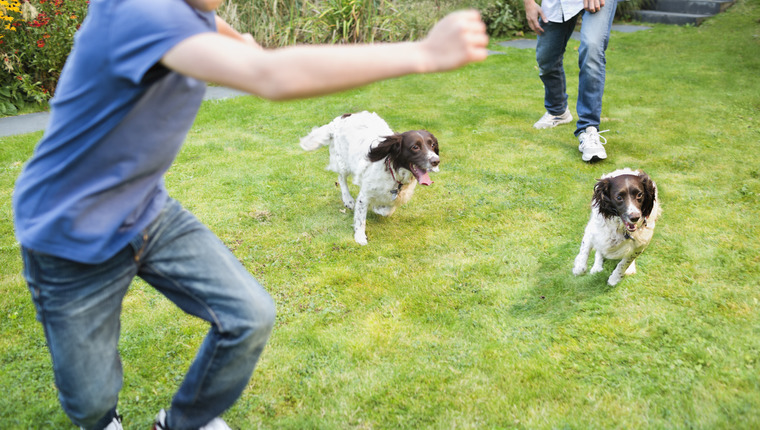
The first dog trained to detect hypoglycemia was a Californian dog called Armstrong in 2003. Of course, service dogs had existed before this point, but dogs’ usage in monitoring blood sugar levels was unknown.
Today, many diabetes detection dogs exist and work alongside their pet parents every day to keep them safe. It lets them go about business as usual with peace of mind. Often, the work they do isn’t life-or-death. But in some cases, witnesses suggest that diabetes detection dogs may save their humans.
A boy and his dog
When Thomas French, from South Ockendon in Essex, had his blood sugar levels tested by his parents, his levels seemed fine, but Poppy, his diabetic alert dog from the charity Hypo Hounds, didn’t agree. Poppy became “frantic”, Thomas’s mother, Jennifer Whiberley, said.
Thomas had just eaten dinner with his family when the dog became “frantic”, Whiberley said. “She launched herself off the sofa at dad Jon, barking and circling him in a frantic effort to get his attention. Poppy is trained to alert us using her paw for Thomas to check his bloods, so we knew something was wrong when her behavior was so insistent.”
His blood glucose levels were good, but when they tested a short while later, Thomas was “crashing dangerously”. The sugary drinks that would typically get Thomas back into a safe zone did not help. His lips were turning blue, his mother said, and he was rushed to the hospital via ambulance.
Once stable he returned home, but Whiberley said Poppy, aged two, would not leave his side. “She laid on him all day and slept. I think she was unsettled. The bond that they share is so strong. I truly believe that she has saved Thomas from going into a life-threatening diabetic coma.”
Helping dogs help others
Poppy is certainly an inspirational and quick-thinking canine. But when we look at our own dogs, we may wonder what potential we have to help other dogs reach their potential.
Most of our pups certainly aren’t cut out to be service dogs. The training is rigorous, and not based on how ‘good’ a dog is, but rather their capabilities to stay focused regardless of external stimuli and remember how to properly alert. But ordinary people still help this process move along.
First, never bring a pup into a business under the pretense of them being a service dog if they truly aren’t – this hinders real service dogs and makes life harder for canines that really have work to do. If you’re dedicated to helping connect people with the support dogs they need, consider working as an assistance dog trainer.
This can sometimes be on a volunteer basis – for example, you may foster a puppy for several months. Or, if you find that the work calls to you and you’re willing to undergo training of your own, you could make a career out of it.









